Christmas, Provenance
The Journey of Our Turkeys from Farm to Fork
In a world dominated by factory farming and mass-produced food, the desire for a more ethical and sustainable approach to agriculture has been on the rise. Consumers are becoming increasingly aware of the importance of knowing where their food comes from and how it is raised.
One excellent example of this movement is the growing popularity of turkeys raised on local farms. Below, we are recording the journey of the best turkeys on planet earth.
The farm in Abbots Bromley
Unnamed for security reasons, don’t want any turkeys being poached!
Beautifully clean and spacious for the fully grown turkeys to roam and try to escape when kept indoors! Yes they mainly spend their days in the surrounding fields, but with the dreaded bird flu becoming more and more dangerous they spend a fair bit of winter indoors.
The barn could fit around 1,000 turkeys but is kept to just a few hundred — this separates Benjamin’s farm from the rest.
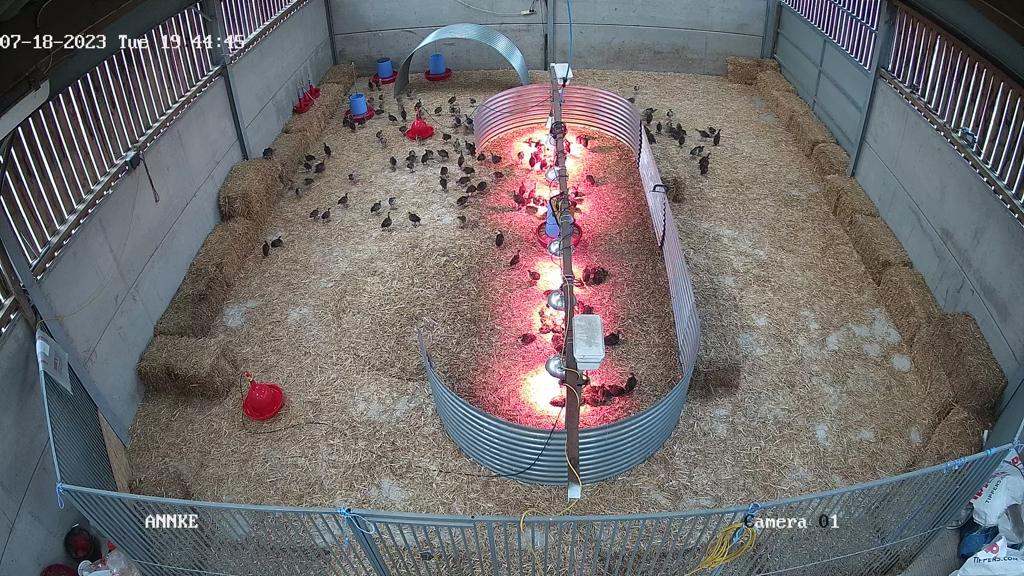
The farmer, Benjamin Browning
I was brought to the house where we rear turkeys when I was five days old. I grew up surrounded by farming — mostly the sort that would be thought of as old-fashioned farming — smaller tractors and machines and more people working the land.
After school in Warwickshire I attended the Royal Agricultural College in Cirencester. On leaving there I went into financial services. I have always kept poultry but one day I decided to try a few turkeys. Word spread and numbers grew steadily — although tiny in comparison to the larger commercial producers.
We created the Traditional Turkey Company and now produce a limited number of very high-quality birds for discerning customers. Some of Benjamin’s private customers are VIP clients including England cricket players.
The butcher, Nicholas Lyons
I don’t like writing about myself, but you are probably wondering what do I know about butchery, food and turkeys. Went to school, couldn’t sit still. Went to Birmingham Food College (UCB), trained for 3 years to become a chef. Worked part time for the family business, Pot washing/master pig in blanket wrapper.
Dad didn’t allow me straight into the business, said I needed to work for someone else. At the time I didn’t understand, now I do (thanks Dad!). Worked in a high-end country house hotel as a chef. Learnt a lot, worked a lot (31 days in a row including Christmas Day). Not sure why I did this looking back as I was paid about £5.50 an hour…
After a year of working ‘away’ (10 minutes down the road) I was ready for the family business. Started in the pie kitchen — 2 years, learnt butchery — 2 years, Covid arrived ☹ — 2 years. During Covid set up online deliveries, now we do national deliveries. Currently run Eric Lyons Knowle, Online and Eric Lyons Wooton Wawen. Enjoy marketing and good food! Now back to Turkeys.
The turkeys — meet Plumpy, Roly-Poly and Triple B
The turkeys arrive as day-old chicks. They are all bronze turkeys but different strains for different end weights. The strains have great names such as ‘Plumpy,’ ‘Roly-Poly’ and ‘BBB’ (Broad Breasted Bronze).
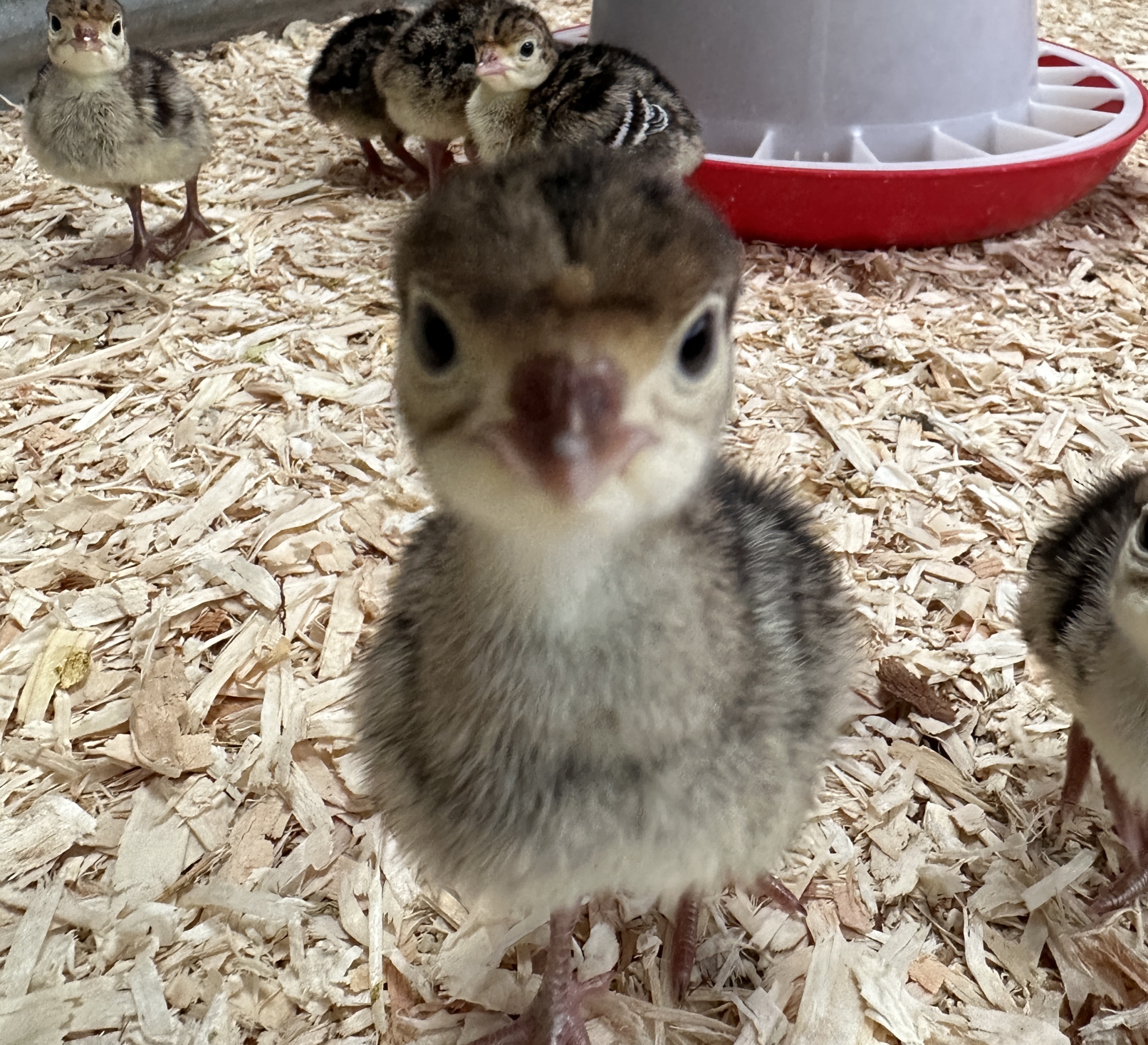
They depend entirely on you for everything. I have to replicate what their mother would have provided them — heat lamps provide the warmth to sustain them as they would have snuggled under their mother, they also have a high-protein crumb diet that is easily digestible and provides the perfect nutritional balance for their development.
They have a continuous supply of fresh water via drinkers which we change in size as they grow up. They are bedded on wood shavings to begin with and move onto straw once they are a few weeks old — this provides an insulation from the cold floor and a micro-drainage system to keep them clean.
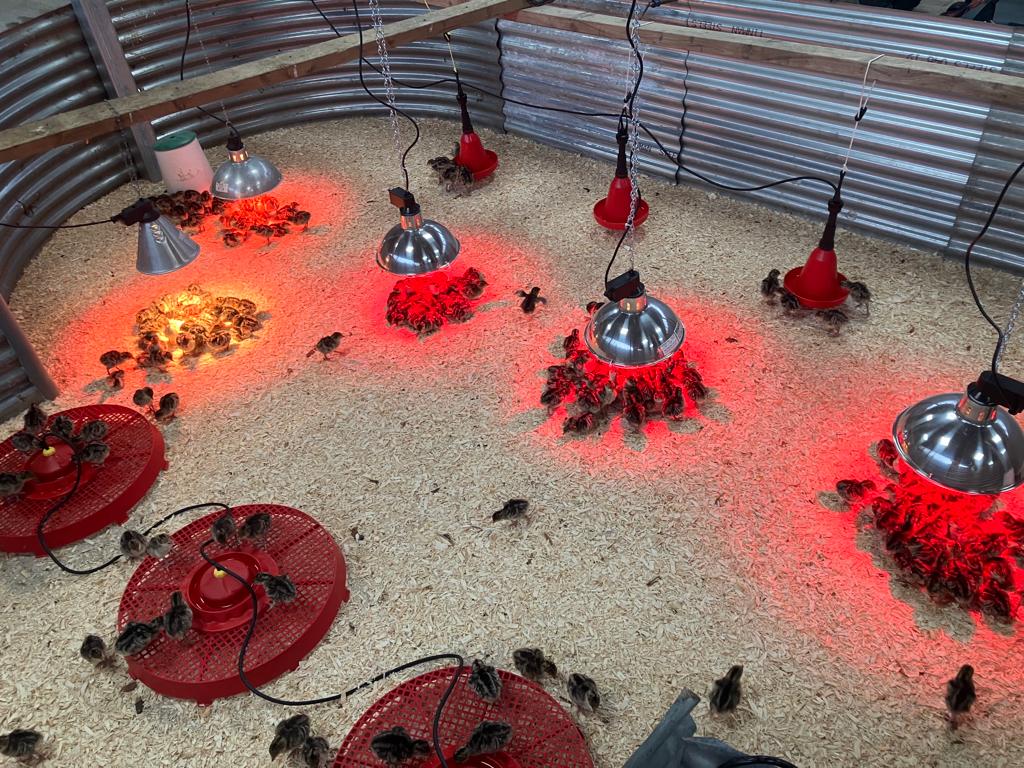
Once they have ‘feathered up’ at about five weeks of age they can sustain themselves without artificial heat and we can turn the lamps off.
Incidentally, this bedding is cleared out after Christmas and left in a heap outside to rot down for a year or so — it is highly nutritious and once well rotted, it is spread on the land to naturally fertilise the growing grass — very much a circular system.
We keep them in the safety of the shed for a few weeks longer because we have buzzards and owls locally which are a delight to see but would swoop in and take the turkeys if they were small and light!
Day 1 — the chicks arrive
The 1st of July. It wasn’t your typical summers day — gloomy about 18°C. The chicks are snuggled together trying to stay warm under the heat lamps. All tweeting away wondering what an earth is happening. Well, they got lucky arriving at Abbots Bromley traveling from the hatchery.
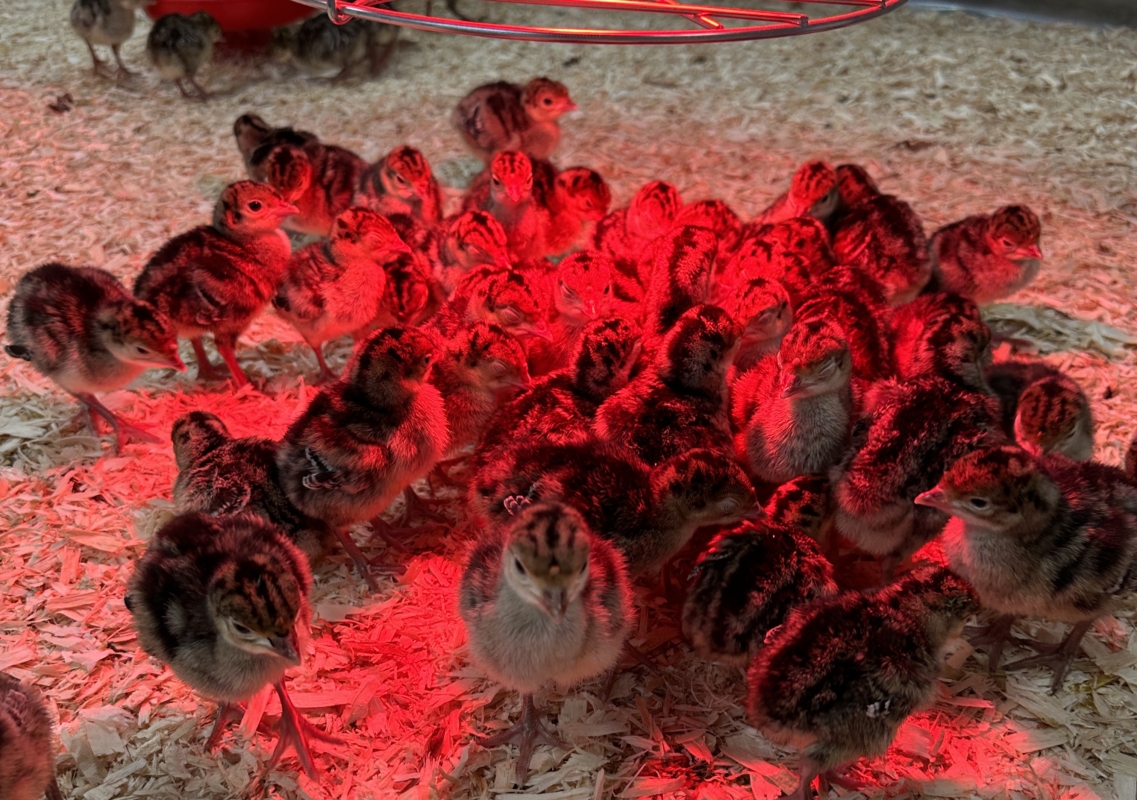
Week 4 — feathering up
Not so cute anymore, they have grown significantly and feathered up. The original pen is expanded into half the barn, this changes as they grow.
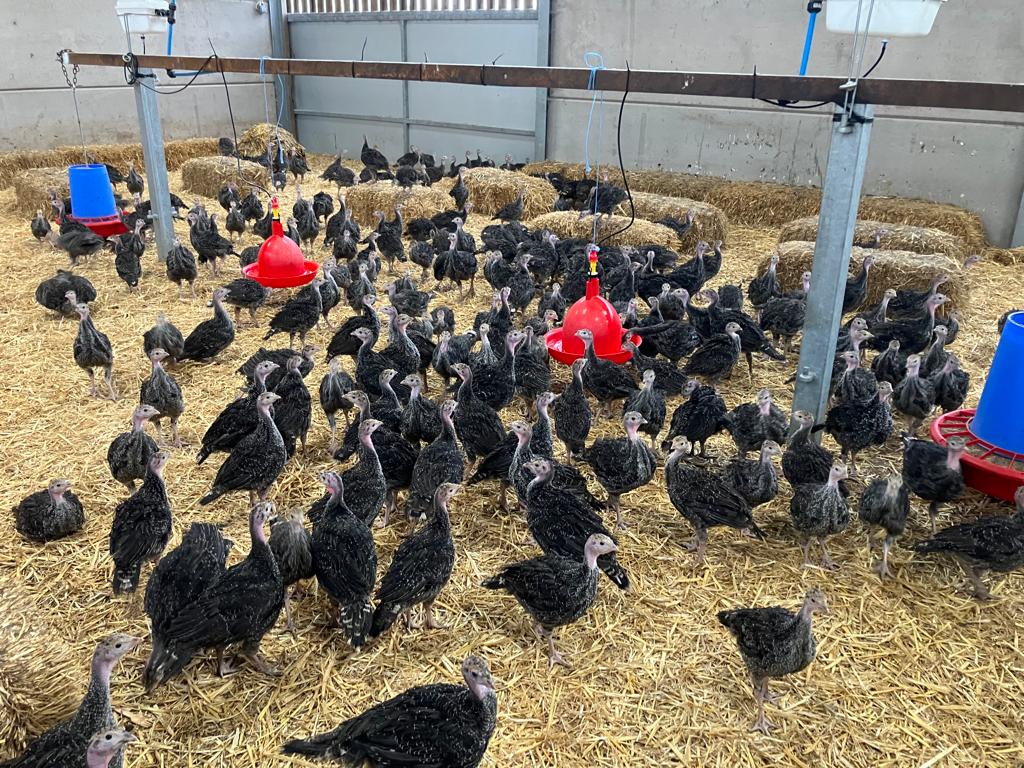
Week 6 — teenage trouble
It’s time to see the outside world. The only time they will ever be shy.
Interesting facts about turkeys that you may or may not find interesting
- They start in a pen with no corners. Why? They would huddle together and crush each other. Silly things.
- Grow very quickly. In just 4 weeks they almost quadruple in size.
- Peck at everything. Shoe laces, insects, walls…
- However hard the farmer tries you will lose some to Mr fox.